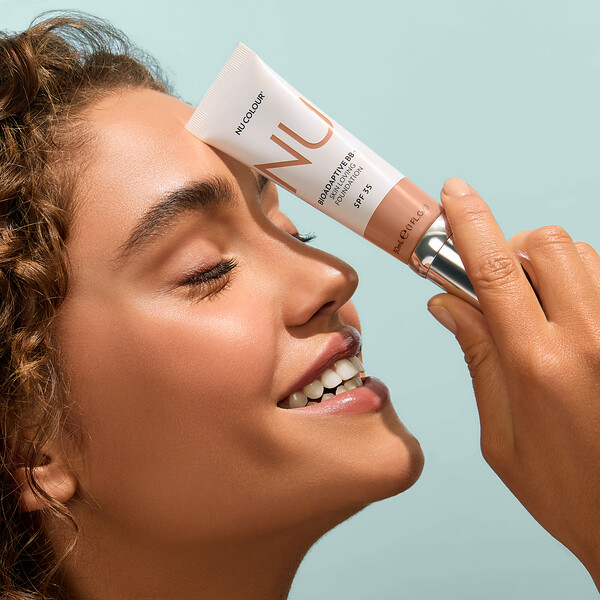
Solving Patchy Foundation: Expert Tips for a Flawless Look
Understanding the Root Causes of Patchy Foundation
Foundation serves as the canvas for a flawless makeup look, but achieving a smooth, even application can sometimes prove challenging. Patchy foundation can result from various factors, many of which are easily overlooked in daily makeup routines. Skin texture plays a crucial role in how foundation adheres and appears on the face. Dry, flaky skin can cause foundation to cling to rough patches, creating an uneven appearance. Conversely, excessively oily skin may cause foundation to separate or slide off in certain areas. Why does my foundation look patchy?The condition of the skin underneath the makeup significantly impacts the final result. Additionally, the choice of foundation formula matters greatly.
A formula that doesn’t match your skin type can lead to patchiness. For instance, a matte foundation on dry skin might accentuate flakiness, while a dewy foundation on oily skin could look uneven as the day progresses. The application technique also influences how foundation sits on the skin. Using the wrong tools or applying too much product can result in an uneven, patchy finish. Environmental factors, such as humidity and temperature, can affect how foundation wears throughout the day. Understanding these root causes is the first step in addressing patchy foundation and achieving a smoother, more even makeup application.

The Impact of Skin Preparation on Foundation Application
Proper skin preparation forms the foundation for flawless makeup application. Neglecting this crucial step often leads to patchy, uneven foundation. A good skincare routine helps create a smooth canvas for makeup. Start with a gentle cleanser to remove dirt, oil, and dead skin cells. This step prevents foundation from clinging to debris on the skin’s surface. Following cleansing, exfoliation plays a vital role in smoothing the skin’s texture. Regular, gentle exfoliation removes dead skin cells that can cause foundation to appear patchy. However, over-exfoliation can lead to irritation and more patchiness, so moderation is key.
After exfoliating, applying a hydrating toner can help balance the skin’s pH and provide an extra layer of moisture. Moisturizing is perhaps the most critical step in skin preparation. Well-hydrated skin allows foundation to glide on smoothly and evenly. Choose a moisturizer that suits your skin type – lightweight for oily skin, richer formulas for dry skin. For extremely dry areas, consider using a facial oil before moisturizer to provide extra nourishment. Lastly, many makeup artists recommend using a primer as the final step in skin preparation. Primers create a smooth base for foundation, helping it adhere better and last longer. They can also address specific skin concerns, such as minimizing pores or controlling oil production.
Choosing the Right Foundation Formula for Your Skin Type
Why does my foundation look patchy?Selecting the appropriate foundation formula for your skin type is crucial in preventing patchiness. Different skin types require different foundation formulations to achieve a smooth, even finish. For dry skin, opt for hydrating, creamy foundations that contain nourishing ingredients like hyaluronic acid or glycerin. These formulas help prevent the foundation from clinging to dry patches. Liquid or cream foundations often work best for dry skin, providing necessary moisture and a dewy finish.
On the other hand, oily skin benefits from oil-free, matte foundations. Look for terms like “long-wearing” or “oil-control” on the product label. Powder foundations or mineral-based formulas can also work well for oily skin, helping to absorb excess oil throughout the day. Combination skin presents a unique challenge, as different areas of the face have different needs. In this case, consider using two different foundation formulas or opt for a buildable, medium-coverage foundation that can be adjusted as needed.
For sensitive skin, mineral-based or fragrance-free foundations are often the best choice to minimize irritation. When choosing a foundation, also consider the level of coverage you need. Full-coverage foundations can look patchy if not applied correctly, while sheer formulas might not provide enough coverage for some skin concerns. Testing foundation samples before purchasing can help ensure you choose the right formula for your skin type and concerns.

The Role of Application Techniques in Achieving Even Coverage
The method used to apply foundation significantly impacts its final appearance. Improper application techniques often result in patchy, uneven coverage. Start by using the right tools for your foundation formula. For liquid foundations, a damp beauty sponge or a dense foundation brush works well. These tools help blend the product seamlessly into the skin. Buffing brushes or kabuki brushes suit powder foundations, allowing for even distribution across the face. When applying liquid foundation, start with a small amount of product and build coverage gradually.
This approach prevents over-application, which can lead to patchiness. Use gentle, circular motions or a stippling technique to work the foundation into the skin. Pay extra attention to areas prone to patchiness, such as around the nose and mouth. For powder foundations, use a light hand and build coverage slowly to avoid a cakey appearance.
Regardless of the foundation type, blending is key. Ensure the foundation is well-blended along the jawline and hairline to avoid visible lines of demarcation. Some makeup artists recommend using different application techniques for different areas of the face. For instance, using fingers to apply foundation around the eyes and nose can provide more precise coverage in these delicate areas. Experiment with various application methods to find what works best for your skin type and foundation formula.
Common Mistakes That Lead to Patchy Foundation
Why does my foundation look patchy? Several common mistakes can result in patchy foundation, even with high-quality products. Overloading the skin with too much product is a frequent error. Excessive foundation can settle into fine lines and pores, creating an uneven, patchy appearance. Instead, start with a thin layer and build coverage only where needed. Another mistake is not allowing skincare products to fully absorb before applying foundation. If moisturizer or primer hasn’t settled into the skin, it can cause the foundation to slip and look patchy.
Give your skincare routine time to absorb, typically about 5-10 minutes, before moving on to makeup. Neglecting to match the foundation to your neck can also create the illusion of patchiness. A stark contrast between face and neck makes the foundation look unnatural and uneven. Always test foundation shades in natural light and blend down to the neck for a seamless finish. Using the wrong powder to set foundation can lead to patchiness as well.
Heavy, cakey powders can emphasize texture and dry patches. Opt for finely-milled, translucent powders and apply them sparingly. Failing to prep the skin properly, as discussed earlier, is another common cause of patchy foundation. Skipping crucial steps like moisturizing can significantly impact the foundation’s appearance. Lastly, using expired or separated foundation products often results in uneven application. Regularly check and replace your makeup to ensure the best performance.

The Influence of Environmental Factors on Foundation Wear
Environmental conditions play a significant role in how foundation wears throughout the day. Humidity can cause foundation to become patchy by increasing oil production or causing excessive sweating. In humid climates, opt for water-resistant or long-wearing formulas to maintain even coverage. Setting the foundation with a light dusting of powder can also help combat humidity-induced patchiness. Conversely, dry, cold weather can exacerbate skin dryness, leading to flaky patches that disrupt foundation application.
In such conditions, amp up your moisturizing routine and consider using a hydrating setting spray to maintain skin hydration throughout the day. Exposure to heat, whether from sun exposure or heated indoor environments, can cause foundation to melt and separate, resulting in a patchy appearance. Using a primer with SPF and touching up with blotting papers can help maintain a fresh look in hot conditions. Air pollution in urban environments can also affect foundation wear, as pollutants can cling to makeup and cause it to break down unevenly.
Using antioxidant-rich skincare and thoroughly cleansing the skin at the end of the day can mitigate these effects. Understanding how different environmental factors impact your foundation can help you adjust your makeup routine accordingly, ensuring a smoother, more consistent appearance regardless of the conditions.
Troubleshooting Specific Foundation Issues
Different types of patchiness require specific solutions. For foundation that looks dry and flaky, focus on hydration. Incorporate a hyaluronic acid serum into your skincare routine to boost moisture levels. Consider mixing a drop of facial oil into your foundation for an extra dose of hydration. If the foundation appears oily and separates in certain areas, oil-control measures are key. Use a mattifying primer in oily zones before foundation application. Throughout the day, blot excess oil with papers rather than adding more powder, which can look cakey. For foundation that settles into fine lines and wrinkles, creating a patchy appearance, try using a smoothing primer specifically designed to fill in these areas.
Apply foundation in thin layers, building coverage gradually to avoid product buildup in creases. When foundation looks patchy due to textural issues like large pores or acne scars, a pore-filling primer can create a smoother canvas. Additionally, pressing the foundation into the skin with a damp sponge, rather than dragging it across the face, can provide more even coverage over textured areas. If the foundation looks patchy due to color mismatch, consider mixing two shades to create a custom color that truly matches your skin tone. Always test foundation in natural light to ensure the best color match.
Advanced Techniques for Flawless Foundation Application
Professional makeup artists employ several advanced techniques to achieve a flawless, patch-free foundation application. One such method is color correction, which involves using color-correcting concealers before foundation to neutralize discoloration. This creates a more even base for foundation, reducing the likelihood of patchiness. Another technique is “sandbagging,” where a heavy layer of loose powder is applied under the eyes and along the jawline before foundation. This prevents foundation from settling into fine lines or transferring onto clothes. The “Wayne Goss method” involves applying a light layer of translucent powder before liquid foundation.
This technique can be particularly effective for oily skin, creating a matte base that helps foundation adhere better. Some makeup artists swear by the “cocktailing” method, which involves mixing different foundation formulas to create a custom blend that addresses multiple skin concerns simultaneously. For extremely uneven skin texture, some professionals use a technique called “stippling,” where foundation is patted onto the skin with a dense brush, building coverage without disturbing the underlying texture. Lastly, the “two-foundation” technique involves using a long-wearing, full-coverage foundation in areas prone to patchiness, and a lighter formula elsewhere for a natural finish.

The Importance of Proper Makeup Removal and Skincare
Why does my foundation look patchy?Achieving a smooth foundation application starts long before the makeup goes on. Proper makeup removal and consistent skincare are crucial in maintaining skin health and preventing foundation patchiness. Always remove makeup thoroughly at the end of the day. Leaving makeup on overnight can clog pores, lead to breakouts, and create an uneven skin texture that affects future foundation application. Use a gentle, effective makeup remover suitable for your skin type. Follow up with a cleanser to ensure all traces of makeup and impurities are removed.
After cleansing, continue with your skincare routine. Regular exfoliation helps remove dead skin cells that can cause foundation to look patchy. However, be cautious not to over-exfoliate, as this can irritate the skin and lead to more texture issues. Incorporate hydrating serums and moisturizers to keep the skin well-nourished. Well-hydrated skin provides a smoother canvas for foundation application. Consider using overnight treatments or masks to address specific skin concerns while you sleep. Consistency is key in skincare – a regular routine helps maintain skin health and texture, making it easier to achieve a flawless foundation application. Remember, healthy skin is the best base for beautiful makeup.
Embracing Your Skin’s Natural Texture
While striving for flawless foundation application is admirable, it’s equally important to embrace your skin’s natural texture. Why does my foundation look patchy?No skin is perfectly smooth, and some texture is normal and beautiful. Makeup should enhance your natural beauty, not mask it entirely. Instead of aiming for a completely flat, unrealistic finish, focus on evening out skin tone while allowing some of your skin’s natural characteristics to show through. This approach often results in a more natural, radiant appearance. For areas with more pronounced texture, such as acne scars or large pores, targeted treatments in your skincare routine can help improve the skin over time.
Remember that many images in media are heavily edited and do not reflect real skin texture. Embracing your skin’s uniqueness can boost confidence and lead to a healthier relationship with makeup. Experiment with different coverage levels and finishes to find what makes you feel most comfortable and confident. Some days might call for fuller coverage, while others might be perfect for a sheer, natural look. The goal of makeup should be to enhance your features and boost your confidence, not to achieve an unrealistic standard of perfection.

